|
The name of this mixed media piece is "Marking Time". The medieval sense of time was the product of a very different way of thinking. The Book of Hours, private devotionals used to prayer the office or hours of the day, were guides to the suggested prayers for each time of day.
This piece is inspired by the Astronomical Clocks found in Europe that depicted the lunar phases, astrological calendars, and "labors of the month"*, or maps of what the agricultural society was doing in a given time of the year. Astrological clocks were meant to map out the solar system and its relationship to time and daily experience according to the way man viewed the cosmos in that time. Inspired by the highly illumined manuscripts, the background for this time piece is a mixture of hand beaded, embroidered and vintage lace. The four elements, earth, air, wind and fire are expressed in Latin. Each miniature banner at the bottom of the piece contains a embossed metal reference to one of the times of prayer at assigned hours or offices of the day: Matins (midnight), Lauds (dawn) Prime (6 a.m.), Terce (9 a.m.), Sext (noon), None (3 p.m.), Vespers 6 p.m.), and Compline (9 p.m.). While the artwork is completely imaginary and not historical, the elements found within this construction all have some acknowledgment of the way medieval people might have thought about marking time. *"Labors of the Month" were a phenological system of expressing what an agricultural society in Medieval times was doing at any given time of the year. Illuminated manuscripts from the period often illustrated common tasks a farmer would perform at a particular month or season.
0 Comments
"The Women at the Tomb": Domestic Icons held the most sacred place in the home. A child would be presented with his Patron Saint at birth and given this icon when he left home. Icons were carried on journeys in processions and used for private devotions. Often, their construction included several panels and opened to reveal small shrines.
This piece was inspired not only by domestic icons but also the Medieval Books of Hours. These highly illuminated and personalized prayer books were often custom made for wealthy medieval women who used them in their private devotions. Illustrations in Books of hours included beautiful paintings of flowers, insects and natural elements. Their pages were filled with imagery elaborating the theme of the prayers. Here, I included some of my favorite women of the Bible, Martha, Lydia, and the women at the tomb. Typically, Saint Martha has been maligned for her hyper-concern for order, work and the material world. That concern is represented by her devotion to the sacred ordinary and hospitality represented by the mop bucket she holds. Saint Lydia was a merchant of purple cloth from Philippi, precious and regal, yet also a symbol of hospitality. Known to have opened her home to the Apostle Paul, Lydia welcomed many early Christians, inviting them to prayer. That's some title!
Some years ago, I took a class as part of my studies of the art and architecture of the church that was about Sacred spaces in common places. While that was not the name of the course, and I no longer remember the title of the course, the gist of it was an exploration of what makes a place in a community sacred, or at least elevates it to the level of a sanctuary and still be a public place. We talked about the design of public open spaces and whether the architecture played a role in how that place might be perceived. What were the elements of the environment that caused people to visit it, even seek refuge in it? What I came away from the class with was that a lot of public funds are thrown at a space and the impact may or may not be readily apparent. While I am grateful for projects that have reclaimed areas in cities where buildings harbored dangerous activities or were being threatened with demolition, I contend that it is not the place, but the experiences we have in a place that make it special, memorable and in some cases reverently held in a person's highest esteem. We were asked at the end of the class to write about our memories of places and what made those places special. Here is what I wrote. It is not exactly what the professor was after, but her comments were nice, and I earned a good grade. It is a long piece. Feel free to download it and read it later if you like read it here: An aerial view of Southern California in the mid to late 1950’s would have revealed a sea of concrete peppered with cookie cutter stamped, long and low ramblers indicative of the era carved into bean fields, interrupted only by the rhythmic bobbing of oil derricks. It is in the context of this slice of suburbia that I encountered nature, consisting mostly of a palette of sunbaked clay, sand, and cement. Trees were either things oranges grew on or the source of the heavenly perfume that scented the air Eucalyptus. Some bore leaves shaped like giant fans. From early childhood, most of my memories of places of special attachment were mundane backyard scenes enhanced by my very vivid imagination. I am of an era when toys were mostly everyday things transformed to use within a virtual reality that you created; I was a product of a “let’s pretend” mentality, not fortified by computer animations and preprogrammed scenarios. One feature of the ubiquitous long hallways of the four-bedroom tract homes provided was a rainy-day refuge easily manipulated with a few sheets and blankets into a tunnel of horrors with which to frighten the younger siblings. Throw in an empty cardboard box or two and you have a complete backdrop for the unfolding storyline of that particular day. Perhaps motivated by the desire to regain control over the traffic flow between bedrooms the hallway once provided, my best friends father provided her with the most extravagant playhouse money could buy which boasted real pane windows complete with flower boxes and a locking Dutch door. While this extravagant backyard addition housed many sleepovers, it never compared in my mind to the much less pretentious bamboo lean too that my father ingeniously devised. A mere shell, it provided me with the opportunity to create an interior that matched my current aesthetic. With a few cleverly hung blankets and a couple of borrowed furnishings, my private clubhouse could become a school, a library, or a grocery store. Privacy was easily attained by reconfiguration of a few simple elements within a matter of moments. Whether my father deserves to be credited with having intentionally invested in bamboo screening with the purpose of stimulating my creativity is of less importance than the fact that it was a key element. This brainstorm after all, would have to co-exist in the same mind as the concept of cedar bark below the monkey bars. Many failed aerial stunts ended abruptly and oh so rudely in the splinter hell, only slightly less painful than the occasional fateful landing in the artichokes cruelly planted at the end of the flight path of the swing. For me, the less structure, the better, in fact, I spent countless hours digging deep holes in the backyard with my father’s blessing as I attempted to reach China. My father was a scientist whose intellectual approach to dealing with the issue of gaping chasm his daughter was creating was to explain how many days it would take at the rate I could dig. Every year about this time I feel the "urge to purge", but more so this year than I recall in years past. My husband calls me the most organized hoarder he knows, and he is right, for the most part I can find just about anything I have pack-ratted away. But it has finally come to a level of stuff that even I can no longer tolerate. By the number of friends and family I have that are currently purging right alongside me, I wonder if there is something in the air.
The most recent area that I have been sorting through is the garage. No one needs three or even two of certain gardening tools, and you can only put so many used and reused plastic pots on one shelf. The vintage airstream has been remodeled for a few years now and if there is a screw or door handle that hasn't been employed by now, it is a good bet it can find a new home. I am very proud of the newly organized area that is my dye studio in the garage as well as the house and spray paint cabinet that is now sorted and labeled. But I am not at all proud of the eight Rubbermaid tubs of paper that seems to have reproduced and multiplied. Did I really put all that out there? Or better yet, when did that happen? The first four were household records, which within minutes of a google search I learned that the IRS really doesn't care about seven years of my grocery store receipts. Those first four boxes were pretty easy and with a trip to the shredder has reduced the tubs to one plus a small filing box. It is the other four that have caused me so much fretting this week. They house all the evidence that I ever went to school, several times as a matter of fact. There are boxes full of academic articles, flash cards and notes. One entire box was essays and papers written over the years. I am sure, another google search and I'd find that most of the articles are readily available online, at least at various universities or museums. And while flash cards were the only way I could remember all those dates and the minutia about Greek, Hebrew and Gaelic language, they haven't been looked at since 2007. Was it that long ago? I have a few degrees, but nothing big and important like some of my siblings or my father and his siblings who held Doctorates achieved. I couldn't pass the GRE which kept me from a master's degree because it meant math skills I never acquired. I have a double major in Comparative Religion and Art History and degrees in Biblical Studies and Biblical language as well as Fashion Illustration. I say that not as a point of pride but to describe the disparate collection of papers I have amassed. My quandary is what to rid the garage of that I won't regret having thrown out in the future. Each night I sort through a box and often revisit it and sort again letting go of a little more each time. I am certain that if I put some time into looking for some of the articles online and created some sort of index and how to find them again, that it would make parting with the articles easier. After all, I haven't read them since graduation. The most difficult papers to part with are the essays. I am trying to understand why. Is it the amount of work that went into them? They represent hours and hours of research. As a perfectionist, who also happens to be dyslexic as well as reading challenged, each assignment was a painful at best. Or is it the accolades my very kind professors gave me and the marks they were so generous with. Is that little ego bump so valuable to me that it causes me to want to hang onto the past this way? Whatever it is that is making it so painful to part with paper, I think I have an idea that might make it a little easier. I will try it once and see if it is the way through to the recycle bin. Starting this week, I will begin to digitize, either by retyping the essays or scanning them and then posting them here. In the process, they will be able to be archived just in case I decide to hang on to them. Additionally, if there are any art history buffs, religious studies majors or just plain academically curious readers who might find some entertainment from my efforts, I will have done something useful aside from clearing space in the garage for new and different collections of things. Stay tuned for the first of potentially many essays from the past. My Husband has a great laugh. It's one of those deep down from the belly, uproarious, a wee bit too loud and very contagious laughs. You can't help but giggle, or even join in with gusto if you hear him. In fact, it doesn't even matter if you heard whatever started the outburst. I grew up with a family full of comedians. The quick wit of my siblings and father were unmatched, or at least I was no match for them. My youngest brother never stops. It seems to roll out of his brain effortlessly and continuously and can cause sore stomach muscles by the end of an extended visit. I know for certain the healing capacity of laughter, it is as they say, medicine for the soul, and free. While I didn't get the gene that makes me funny, I do like to make people laugh if I can. During the seven weeks of radiation therapy, I recently went through, I became close to the other patients in the waiting area each day. They were always so upbeat and cheerful, and while I do my best to be as positive as possible, I am also a shy person. I am more comfortable in the background. To remedy this, I made t-shirts emblazoned with humor, or at least, happy thoughts. You can see some of them in the gallery of photos below. In an almost ritualistic manner, I would walk into the waiting room, ready to reveal my t-shirt to any who might ask. The smiles I received were my pain management for the day, and my hope was always that it was mutual. Before I was finished with my treatments, I had also gifted anyone else there each day with a shirt of their own, including all the wonderful staff of Radiation Specialists. It is the simple things that we often take for granted, like laughter, that can make even the darker moments bright and shiny, and maybe even a little fun. My T-Shirt Humor WardrobeGifts for OthersToday was a momentous day. What started as a little glimmer, blossomed and grew and has become a reality. The once frightening mask that caused some apprehension, has been transformed into something that for me is a symbol of a sort of resurrection. Butterflies are traditional representations of that transformative power of rebirth.
I love fairy tales. Even though they sometimes have a frightening component to them, usually a dragon is slain, and the story culminates with a happy ending. There is something very compelling about the prospect of living happily ever after, isn't there? I am about to share a story with you that while it is not a fairy tale, does have a some potentially fearful moments as well as many very happy ones. This story has not been shared with many people until now. It is my hope that in its telling, you will find the same hope and happiness that I have. I suppose I should start with "Once upon a time", but that would be rather silly, since it was, to be specific, March 12, 2023. On that day I received unexpected news, delivered very clinically, I was diagnosed with cancer. A type of cancer that is not particularly rare, that in fact there is a vaccine against, (parents, please be sure your children are vaccinated). In my case the cancer found its way to the soft palette of my mouth and my left tonsil. Because of its location, surgery was not advisable. Treatment took the form of seven weeks of radiation therapy every day. The days following were full of uncertainty and a fair dose of fear, but rather than dwell there, (I did say I like fairy tales, right?) let us get right to the dragon slaying.
I hope you will stay tuned to see what becomes of the BIG IDEA, the less scary, more beautiful, hope filled mask. In the meantime, here is a little sneak preview of the goings on, behind the scenes. My deepest gratitude to the entire team of Swedish Cancer Institute, Issaquah Campus.
The same creative possibilities that widen your visual vocabulary, can also overwhelm and stall the creative process. At some point creative play may border on procrastination. When I get a bit lost, I can ask why the BIG IDEA has come, what is its purpose. If I have already been given my marching orders, and have just lost sight of them, moving from gathering and making into action helps me refocus. It is now time to take the materials and elements which have been created and transform and compose them in a manner that will best honor this BIG IDEAS’ message. A message of new life, hope and beauty. A visual presence that will quiet fear and shed light even in dark places. There is more to the story . . . stay tuned. If you entertain a big idea, you must be willing to experiment, it will demand that of you. Give it space, and it will guide you into some of the most unexpected places. What do you do with that big idea? The one that awakens you in the night, taps you on the shoulder, as if to remind you it needs to be birthed. I begin by gathering, collecting its colors and textures. I ask what it's essence must feel like and what part of the spectrum it wants to land in. Sometimes a big idea charges into the room demanding to be created this way, or with that color and that feels like this. At other times the idea enters softly, no less large and every bit as persistent, but less defined, that can be frightening, or it can be an invitation. Listen, let it breathe into your heart, let it blossom, but begin, somewhere. I remember its first glimmer, that thing that woke me not so gently in the night and whispered, this is how it shall be. It took the form of butterflies. And now, it grows into so much more. Once I have gathered materials and set my sights on a course of action, I begin by creating some of the elements that appear in the vision in my mind. Here are some of the components created so far, including needle felted wool feathers, bees, a nest and a hummingbird and machine embroidered freestanding butterflies.
There is a delightful book by Kobi Yamada and illustrated by Mae Besom called "What Do You do with an Idea?" (check it out HERE). What I love about the book is that the idea is as an egg with legs that can walks around with the main character, nudging him along until he has the confidence to bring the idea into being. I have always felt like the really Big Ideas do take on a life of their own. I have learned to pay attention, from their very inception, perhaps just a passing vision, giving the idea space to grow and being careful to listen to its nudges and taps on my shoulder. The process is fascinating to me, and most likely different from your process. I think we all find our way with this Big Ideas, sometimes ignoring them completely because we are "too busy". It saddens me to think that as adults, we "grow up" into the notion that entertaining a Big Idea, or submitting to the sheer joy of creative play, is somehow folly and far too frivolous for a normal, responsible, adult to engage in. I don't profess to be a normal adult, although I am pretty responsible. Follow me if you dare, and see what can happen if you entertain a Big Idea.
Brenda Swenson's suggested add-ins
GERBERA DAISYToday's subject didn't just catch my eye but grabbed me and stopped me in my tracks on the way to the garage. This stunning daisy is my favorite color, red of course so that may be partly why it spoke so loudly to me today.
To mix this color I began with Daniel Smith Watercolors: Cadmium Red Medium Hue, Quinacridone Rose, with French Ultramarine Blue for shadows and Hansa Yellow Light for the flower center and to mix a leafy green. I warmed my red with the yellow and cooled it with the French Ultramarine blue and created my neutral dark with all the colors in this palette. This was another fun exercise. I do find that the process takes a bit more time than the previous challenge did. This may mean fewer posts but they will continue with as much frequency as I can manage Day one of a new challengeAnd not completely sure where this one is going . . .but the idea being, a practice that gets me outside before the summer comes to a close and painting what I see in my backyard, either from life or a photo. My "rules" this time are, drawing or painting from life if at all possible, without creating more stress in an already too full schedule. If weather or time makes that impossible, then from a photo, but the photo has to be from something I notice while outside that day. My challenge will be to look for the predominant color of the subject matter, and then mix that color, rather than using a straight from the tube color. So, lets see how this goes.
I started by choosing a familiar subject, the frog name Robert, (because he came from a plant, jumped out of the hanging basket I was watering) who lives at the front door. We think he has taken on the roll of the doorbell since he lives where one would be if we had one and his croak is so loud that an approaching visitor would be well announced regardless of our doorbell deficit. I limited my palette to sap green, yellow ochre and Phthalo Turquoise, mixed all my greens with those three colors I added burnt sienna, quinacridone purple and indigo to darken shadows. I cooled down my greens and shadows with purple and warmed them up with burnt sienna. This is going to be fun. OPERA REDMuch like Opera Pink by Daniel Smith, this Turner Watercolor Opera Red is a very bold, bright red on the magenta side and a staining pigment. It's wide variety of values allowed me to use it almost exclusively to render all the different stages of this Rhododendron's bloom from completely closed to about to open.
This is the very last of my watercolor paints. I have swatched them all, and some more than once by accident. While that might be a good excuse to stop challenging myself in this way, I am not going to give it up just yet. I will reveal the next challenging idea tomorrow, but for now, it is nice to have met a goal of test driving every single tube of watercolor paint in my studio and in the process, now have a well established daily, (or almost daily) practice of painting in my sketchbook. COBALT TURQUOISE & COBALT TURQUOISE LIGHTWinsor Newton's Cobalt Turquoise and Turquoise Light are sister pigments and similar enough I swatched them together.
Cobalt Turquoise is a blend of blue and green pigments named for the for the semi-precious stone, turquoise. Cobalt Turquoise Light is a paler, slightly greener color than Cobalt Turquoise. My garden boots are the same beautiful greenish blue as Cobalt Turquoise light PHTHALOCYANINE BLUE L'Aquarelle by Sennlier makes this sky blue derivation of Phthalo Blue, the organic blue chemists came up with under the name of "monastal" blue. It is a highly complex organic synthesis. Even though Ultramarine Blue is considered the most important blue in a landscape painter's palette, it just cannot produce the blue of Phthalo Blue even mixed with other colors. It certainly nailed the color of the sky over the tulip fields in the Skagit Field on this particularly clear and bright day.
CINEREOUS BLUESennlier L'Aquarelle uses a variant of Phthalo Blue that has a bit of a greener shade. Phtahlo Blue was a pigment that chemists developed with the trade name Monstral Blue in 1935 more or less by accident while creating a dyestuff to replace Prussian Blue. This version has zinc white in it and with a honey binder, is more opaque than most Phthalo blues. It is another interesting color
ANTWERP BLUEWinsor Newton Antwerp blue is a transparent blue color. and a softer version of Prussian Blue. It lifts well and would be a nice addition to the palette of a landscape painter for both water and sky.
OLIVE GREENOlive green is a soft, warm, brownish green from Winsor Newton Watercolors. It is a natural for the leafy greens in landscapes and botanicals. The dragonfly in this quick sketch was so clear and see-through that the greenery around him seemed to camouflage him.
|
SOUL“I am a contemplative artist who has trouble accessing verbal skills. Finding the right words to talk about the amazing things I observe around me can be frustrating. It is much more natural for me to pick up a paintbrush, some embroidery floss or my camera when I wish to share some new discovery. The artwork I create is meant to be enjoyed on whatever level the viewer experiences it and not layered with complex meaning. Feathers, fur, flowers and the incredible variation I find in wildlife not only inspire me, but compel me to share every nuance with you. Archives
July 2024
|


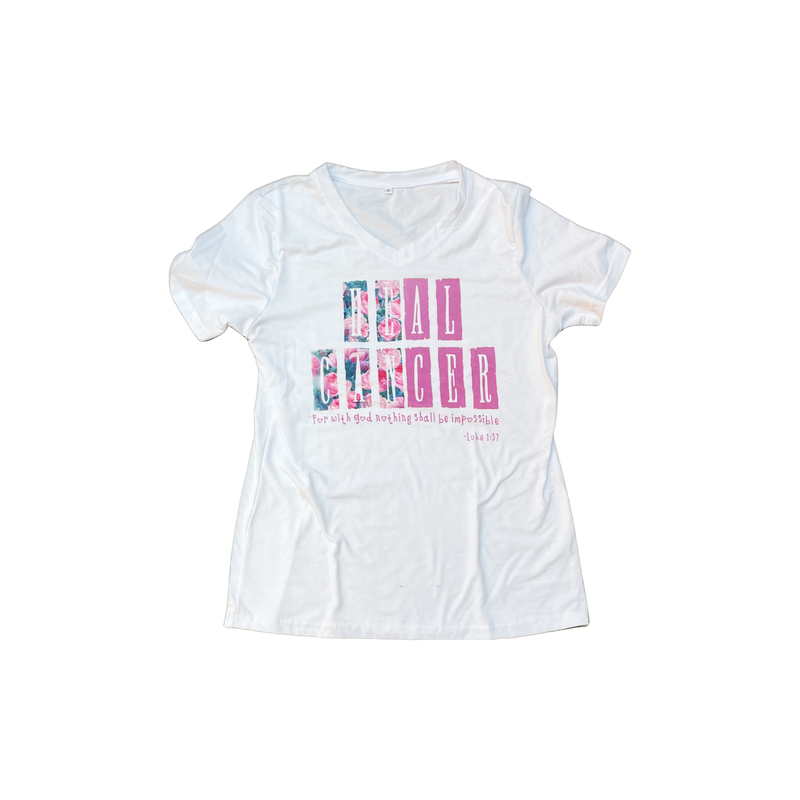
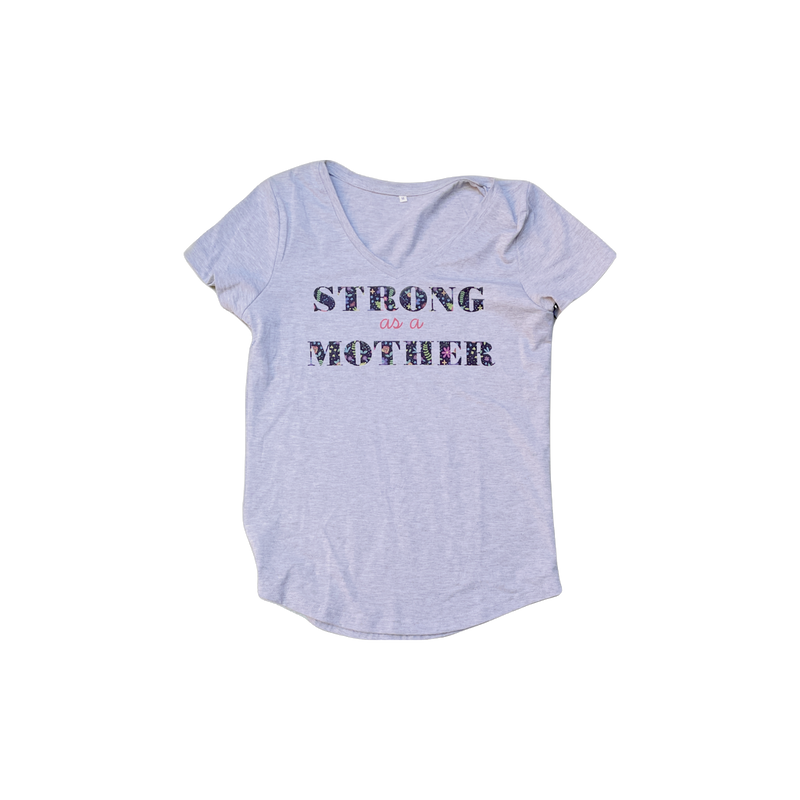
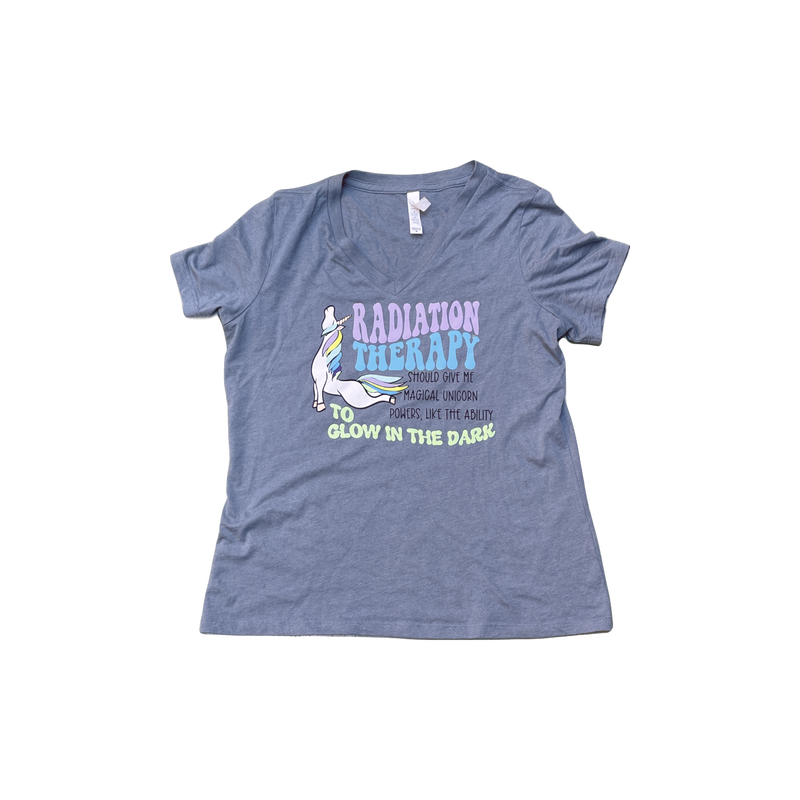
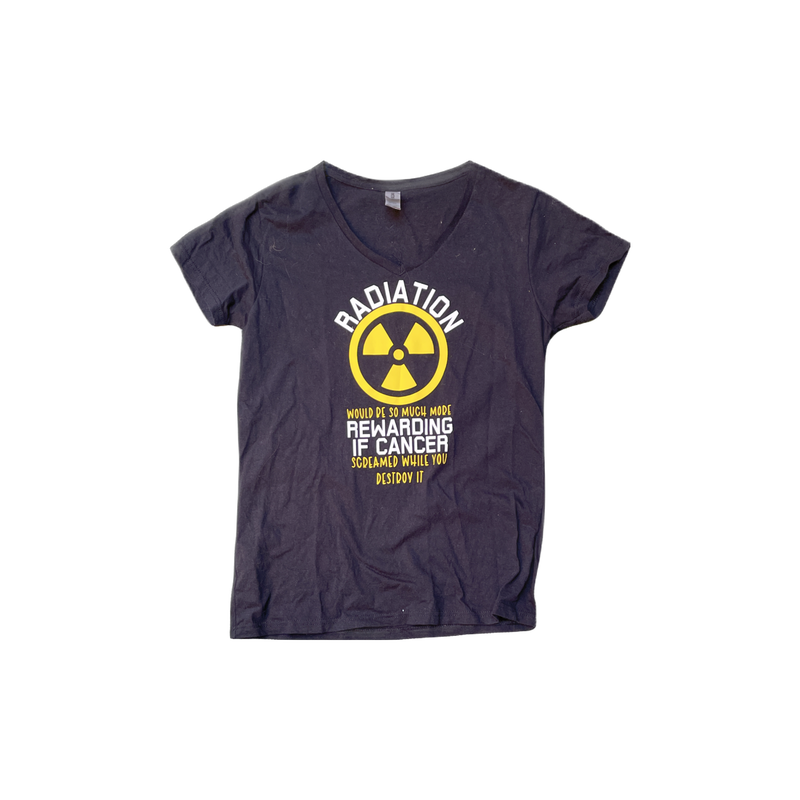

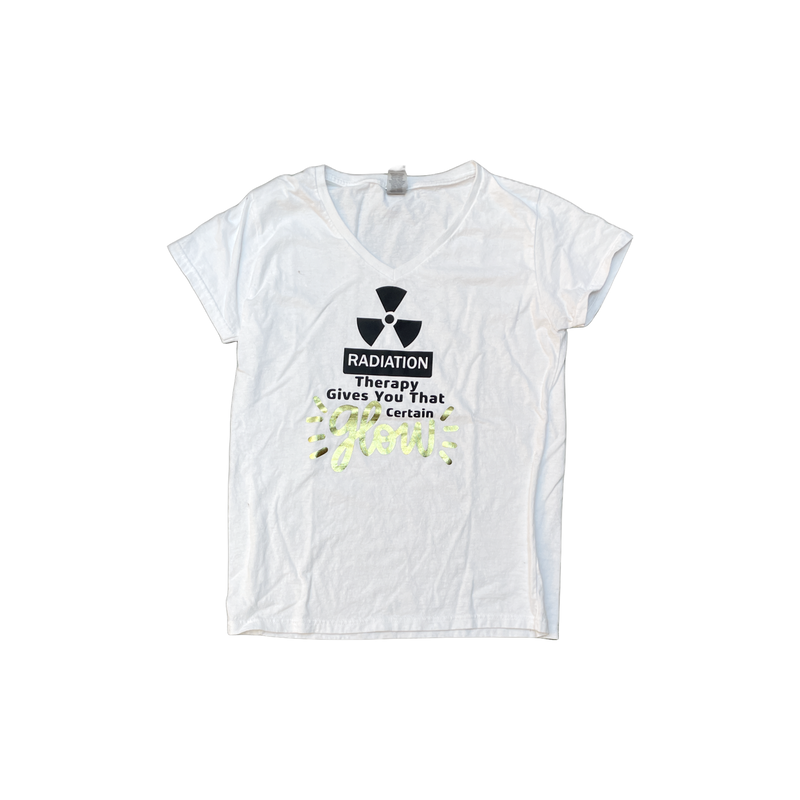
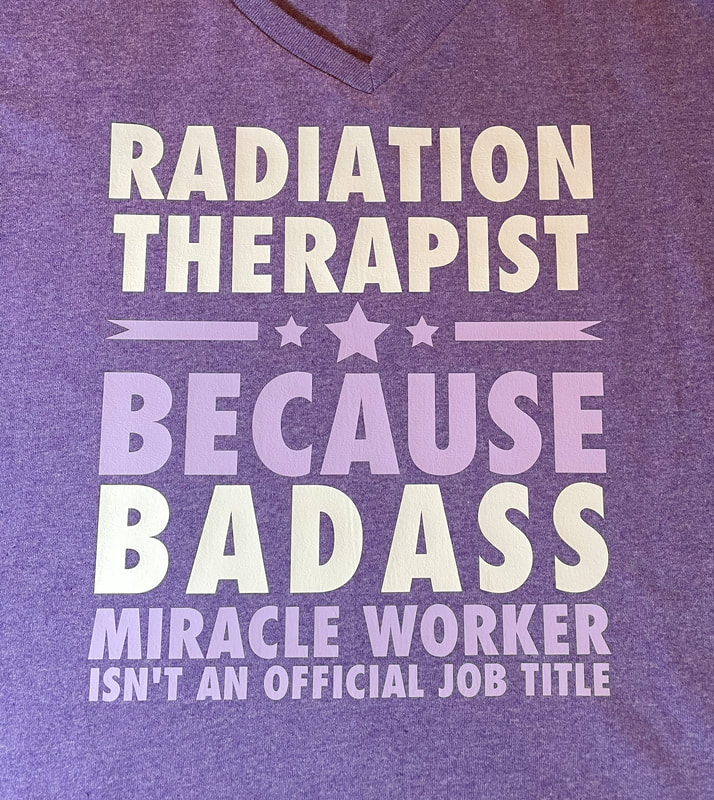
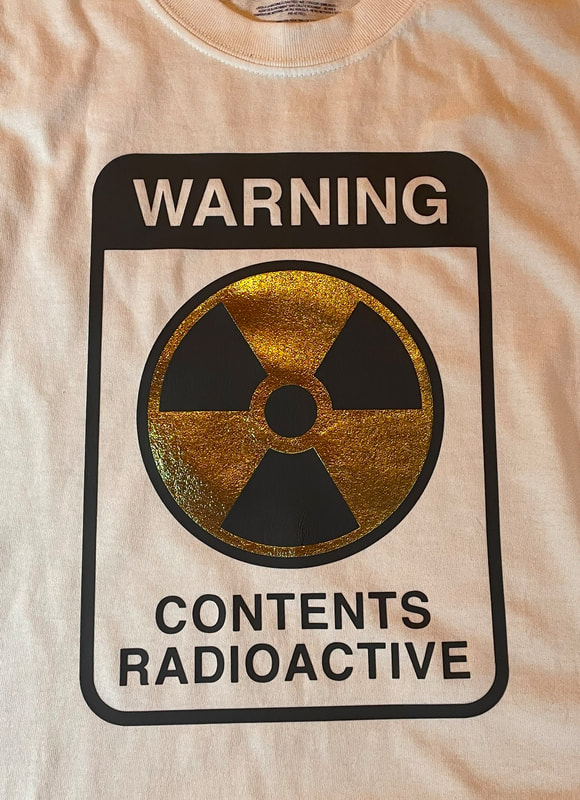
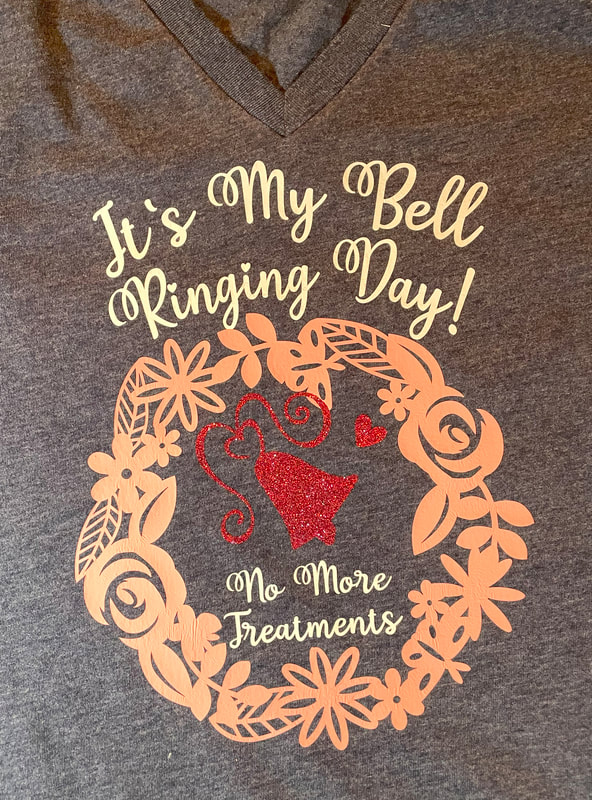
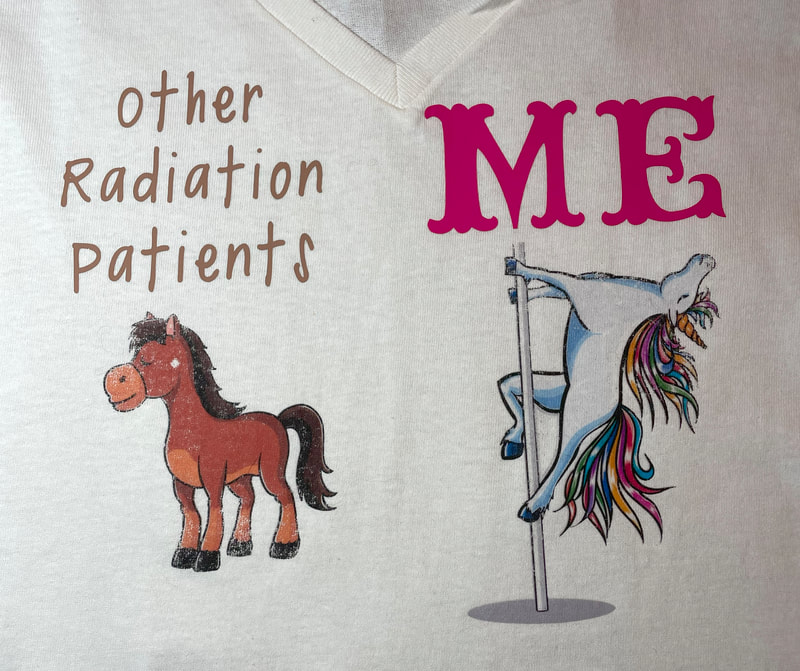
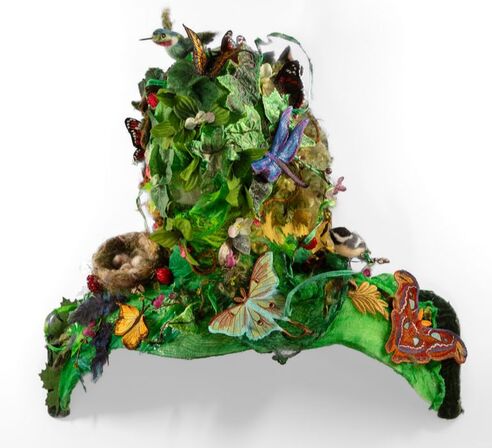
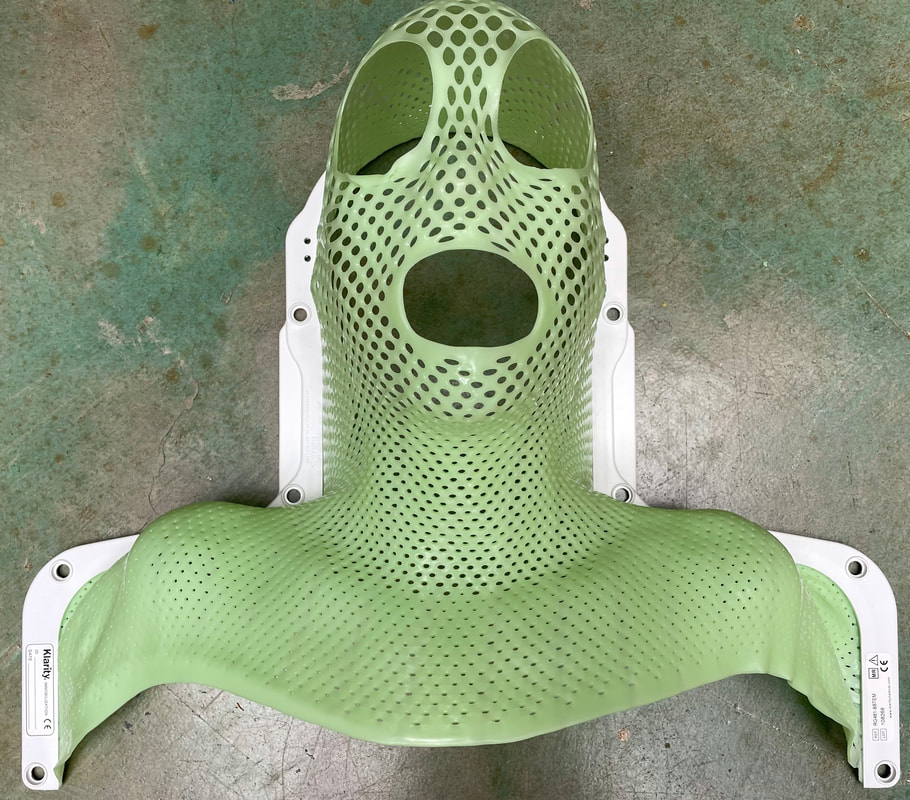
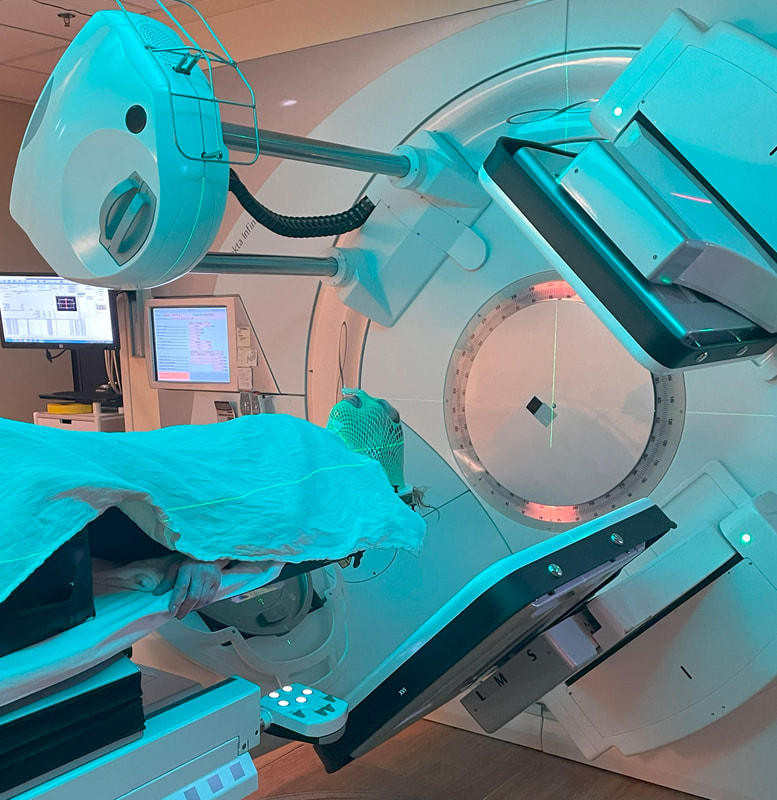

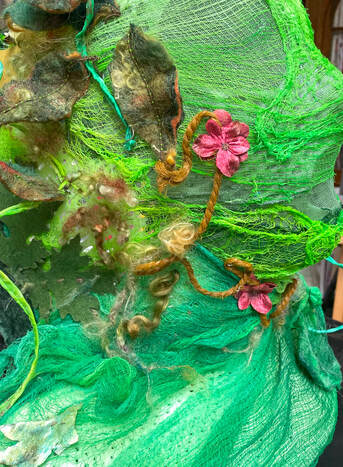
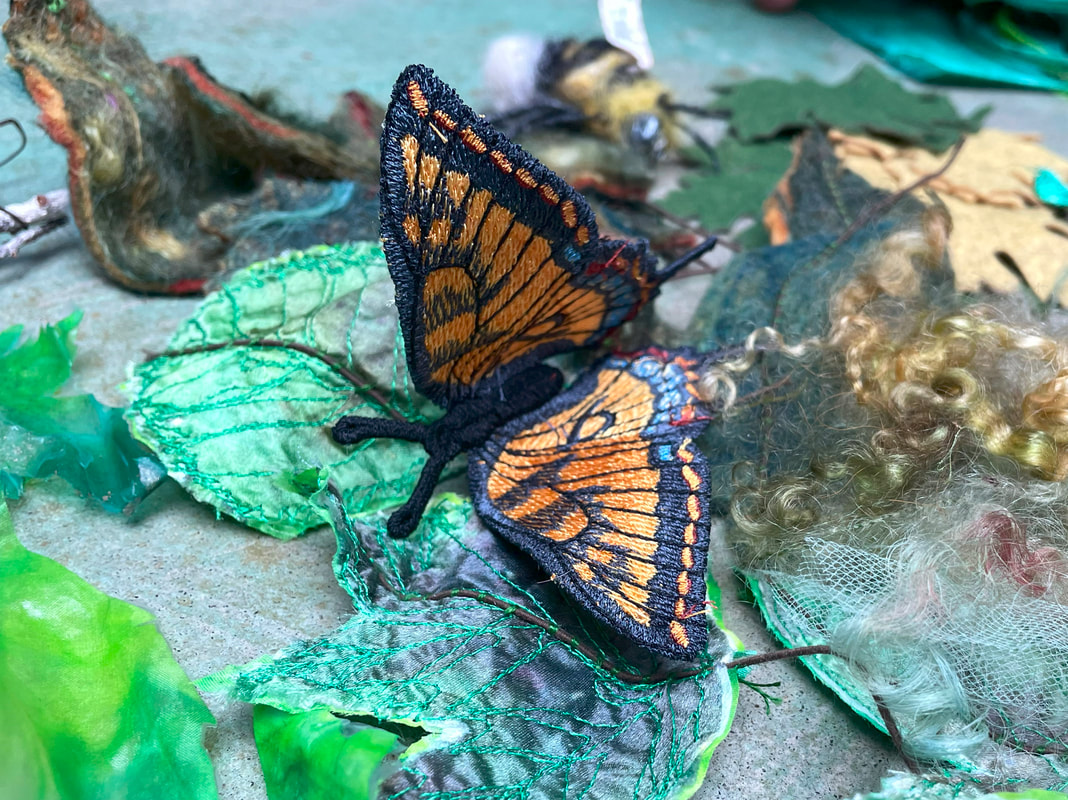
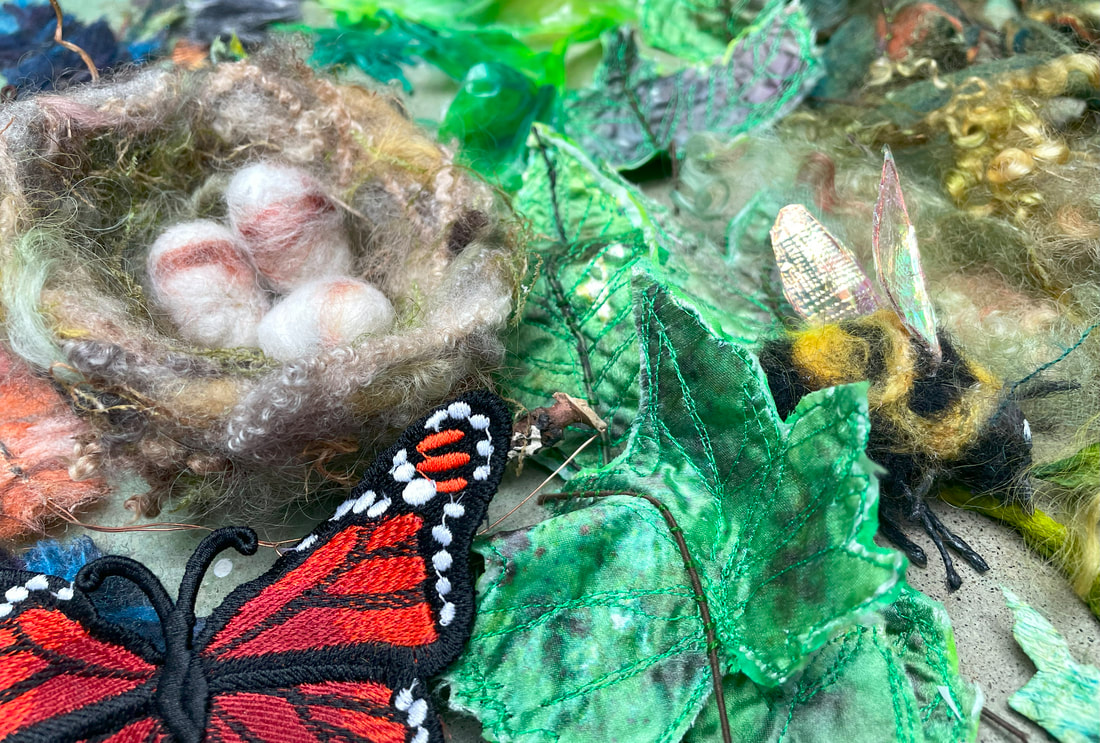
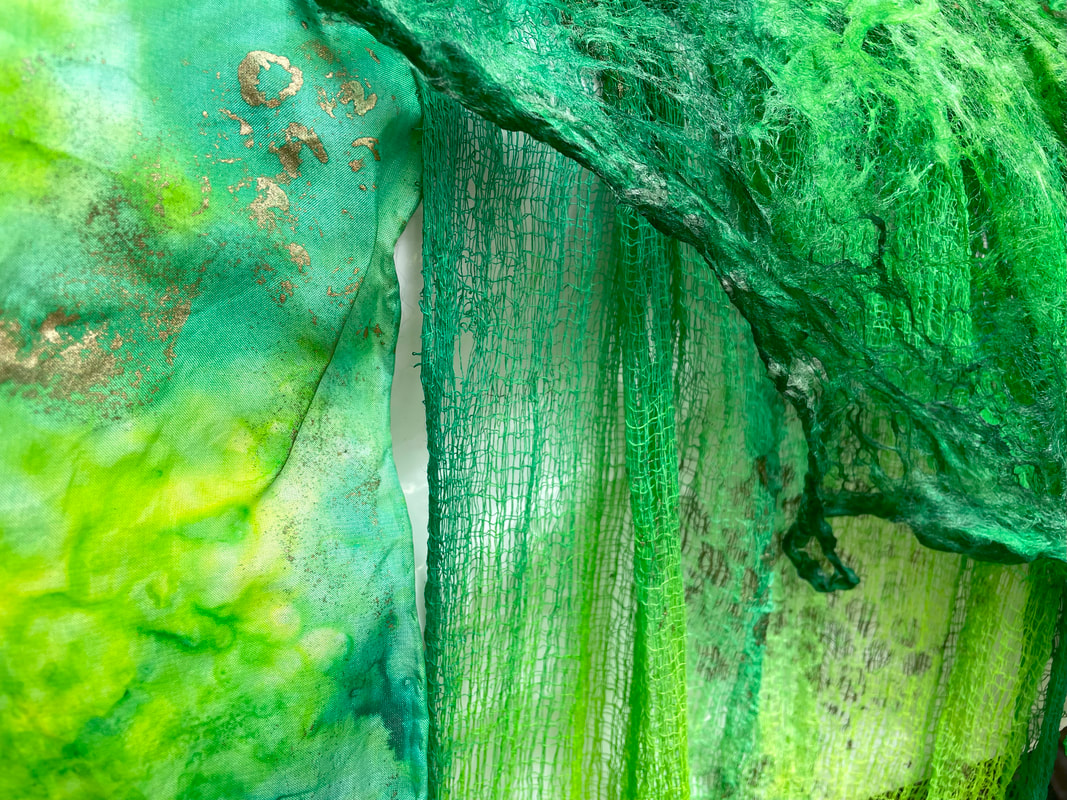
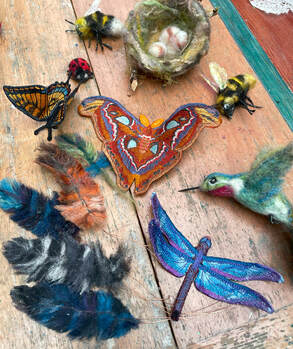
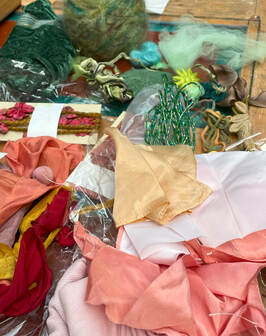
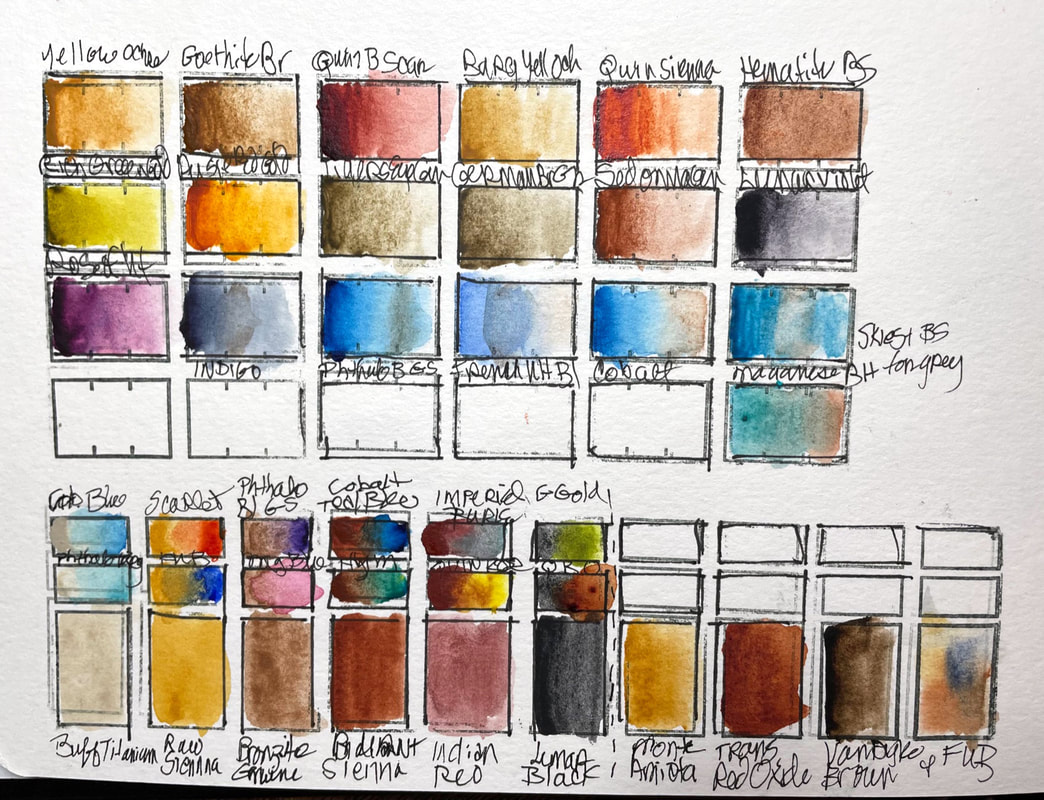
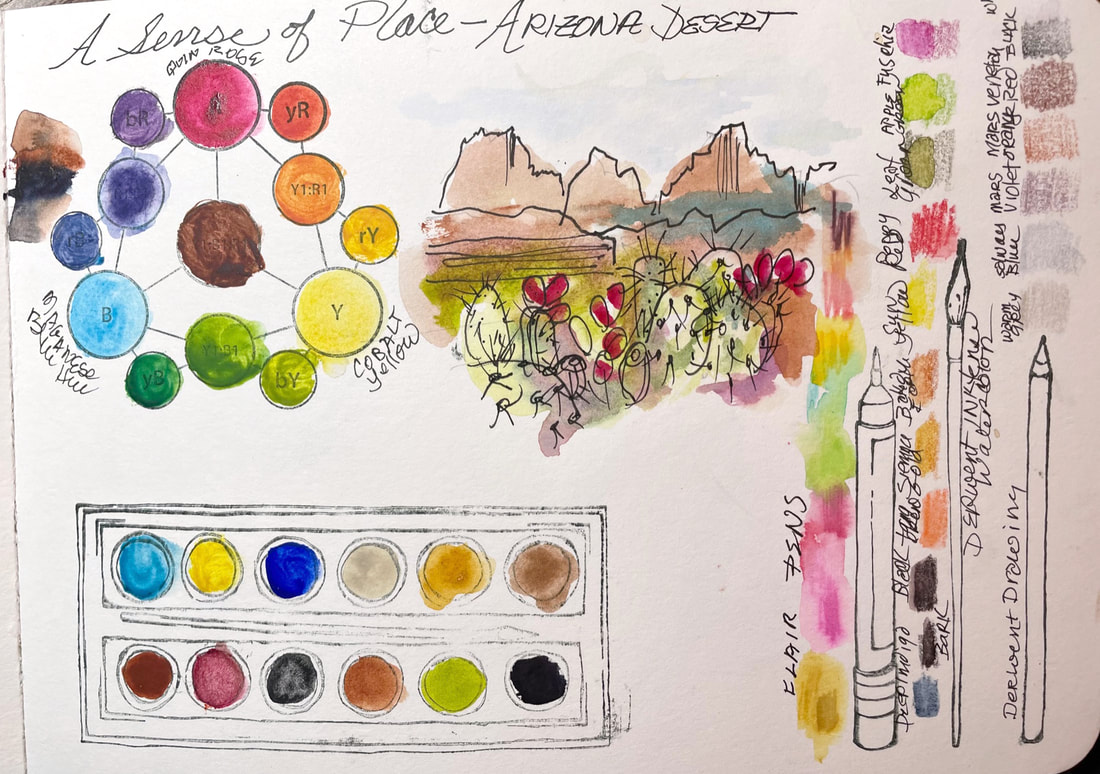
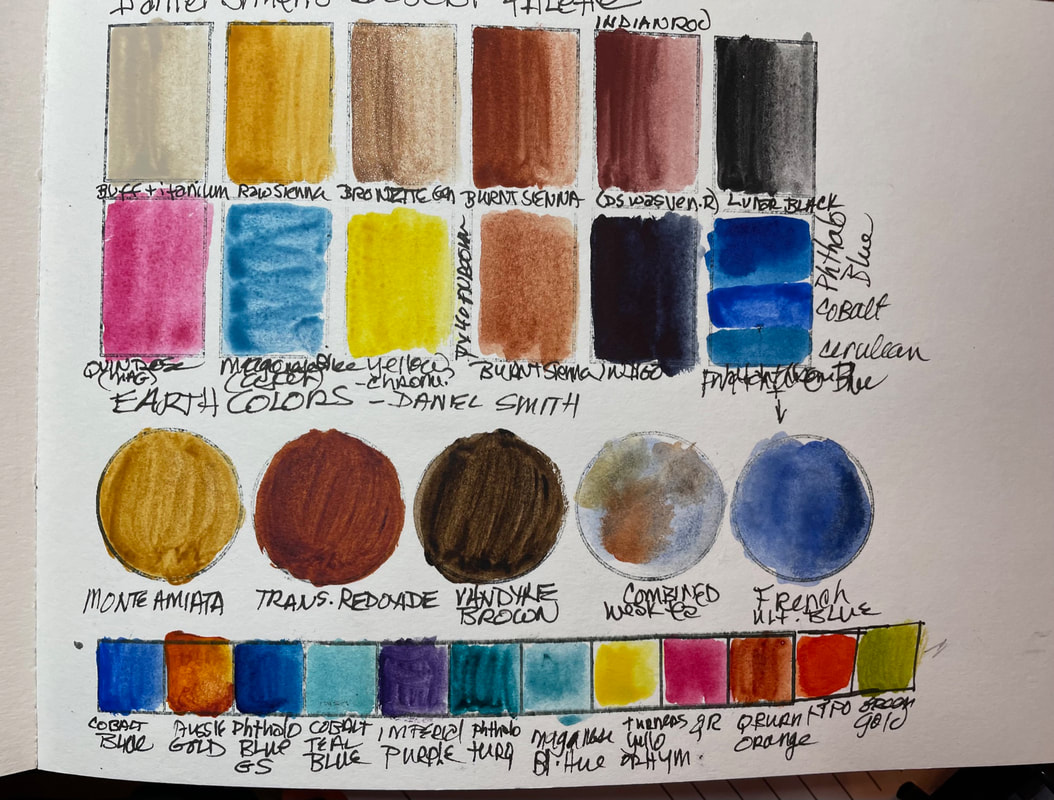
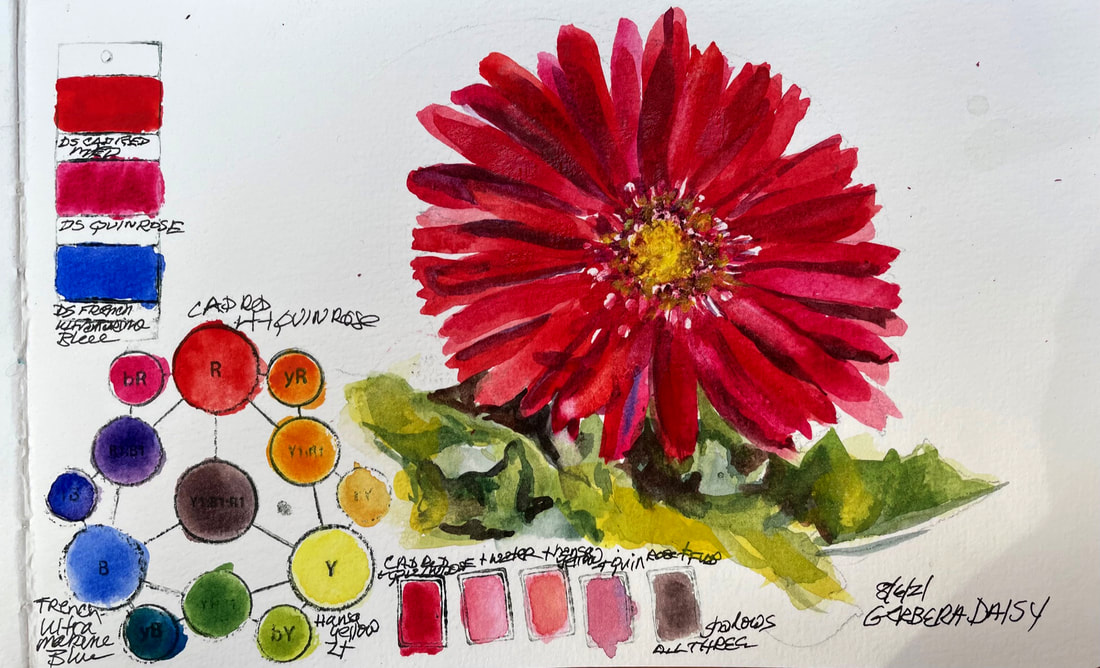
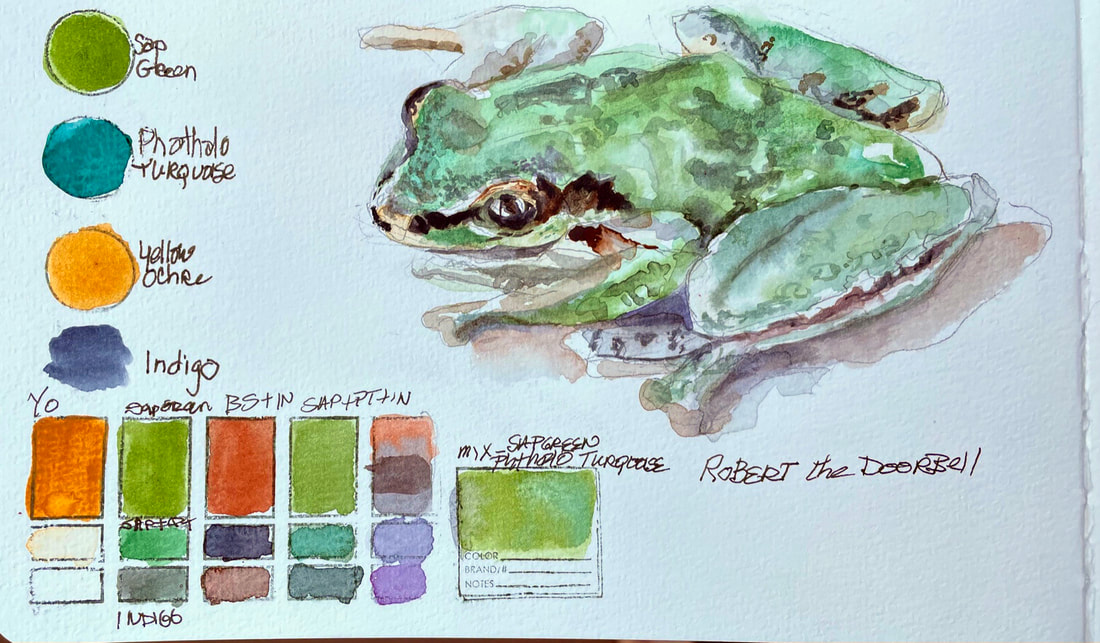
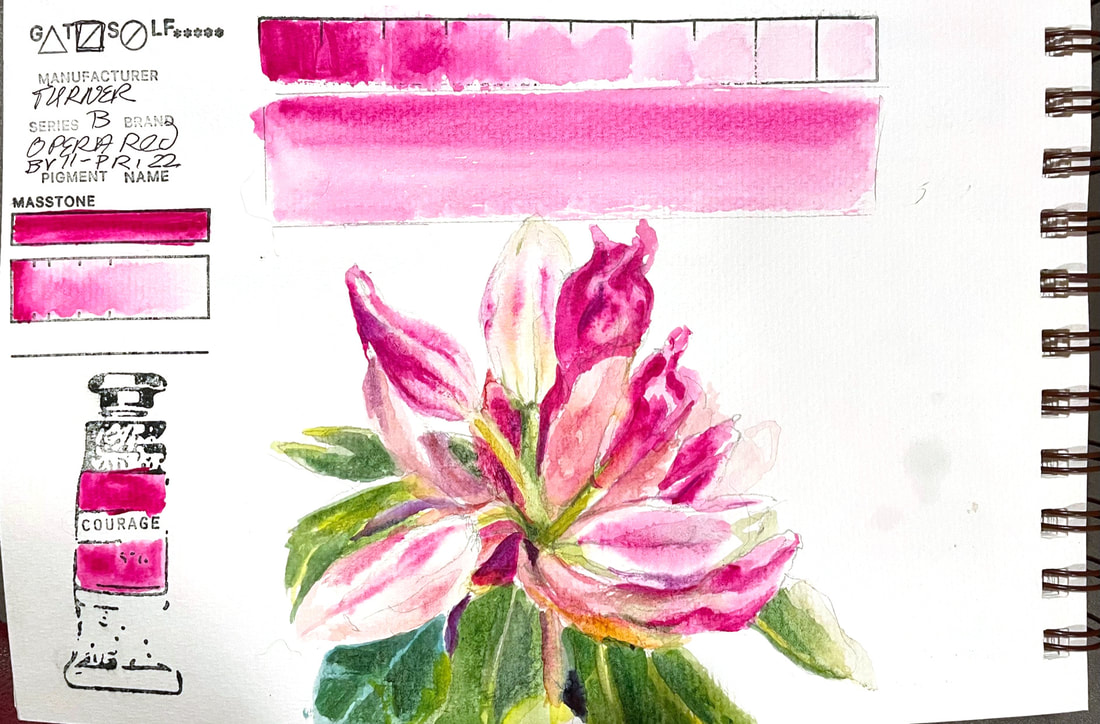
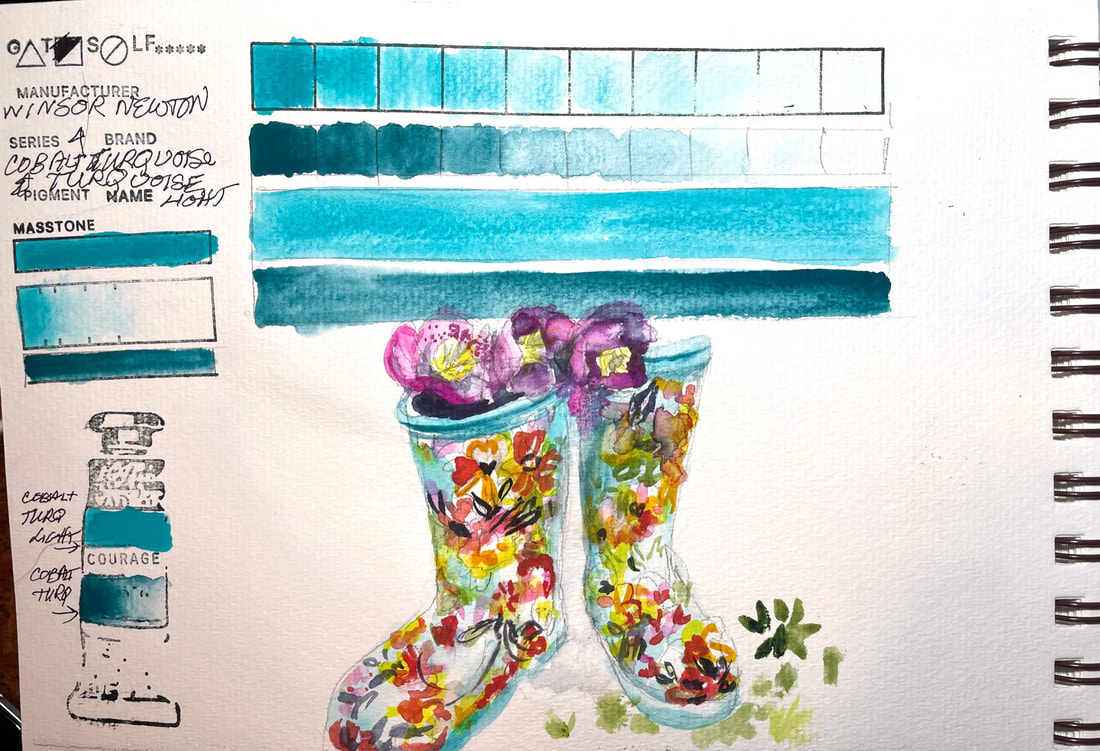
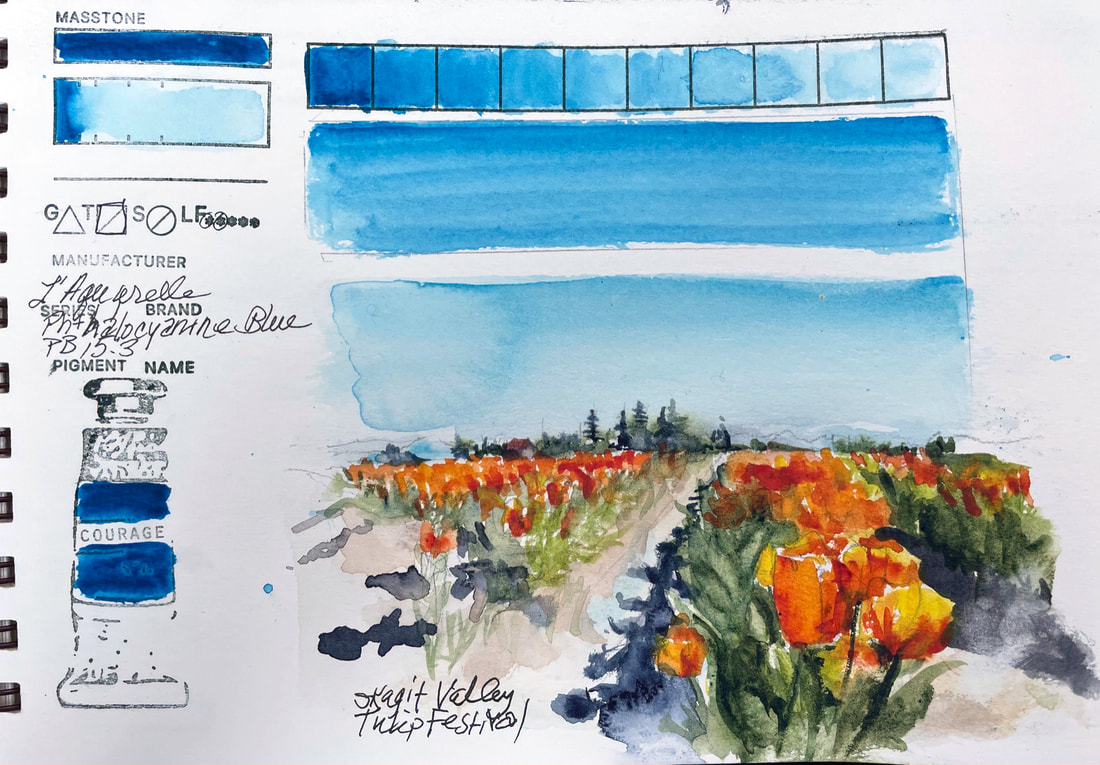
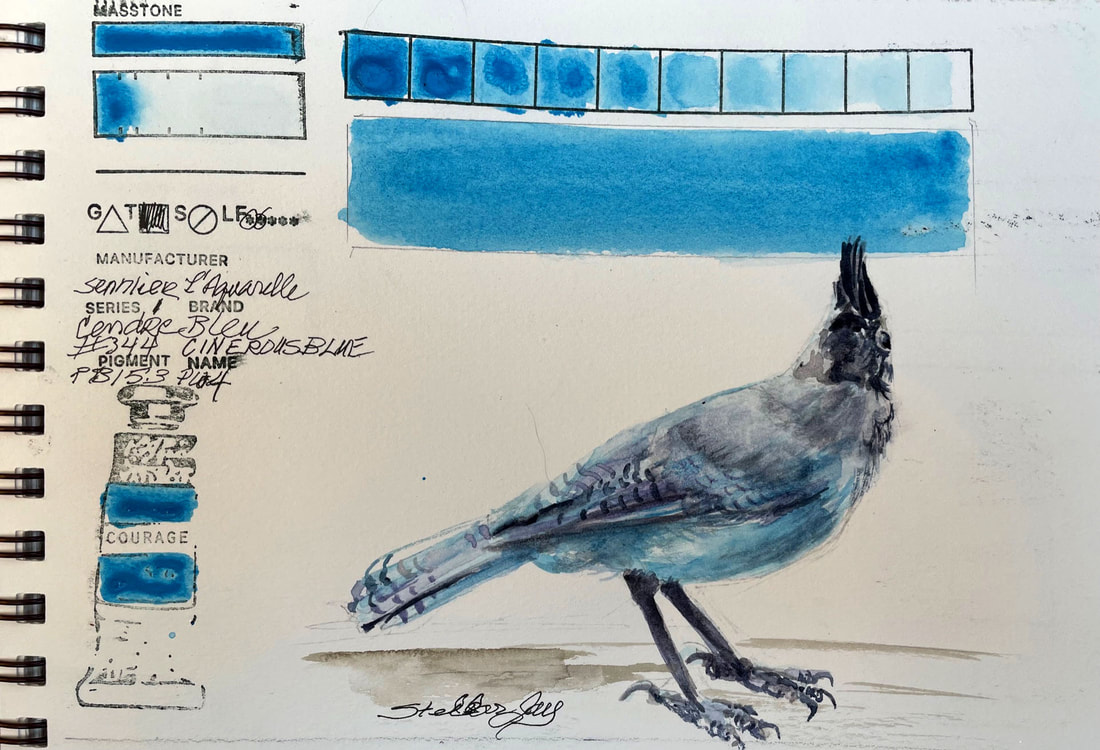
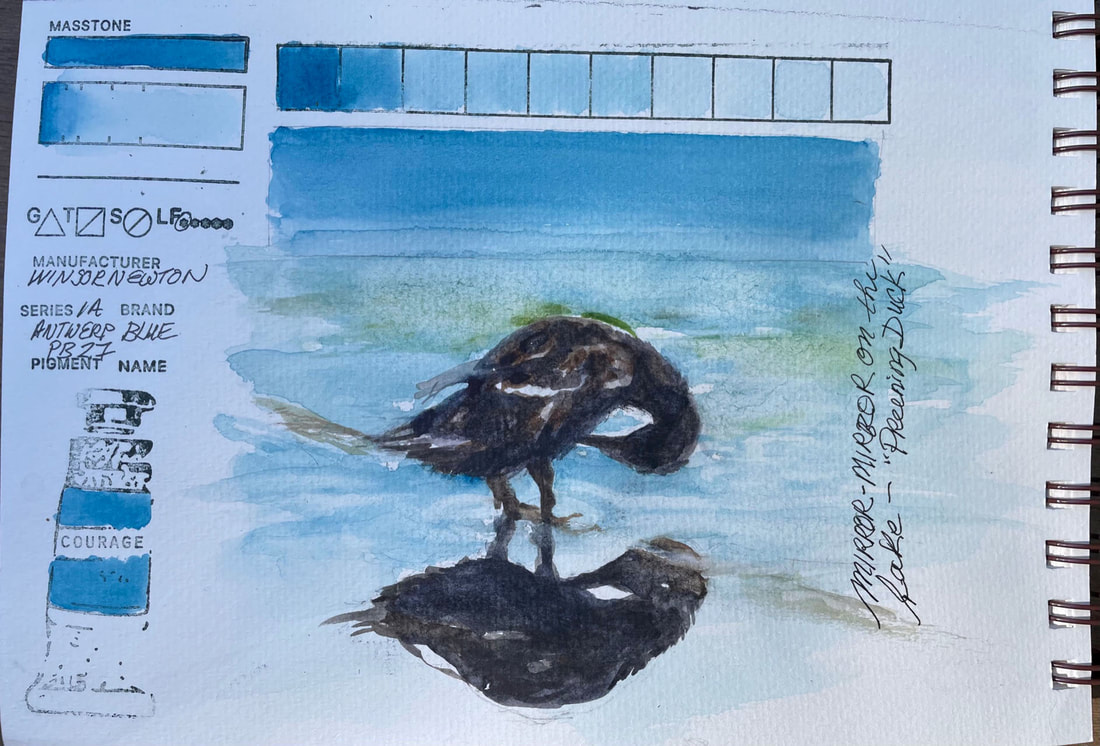

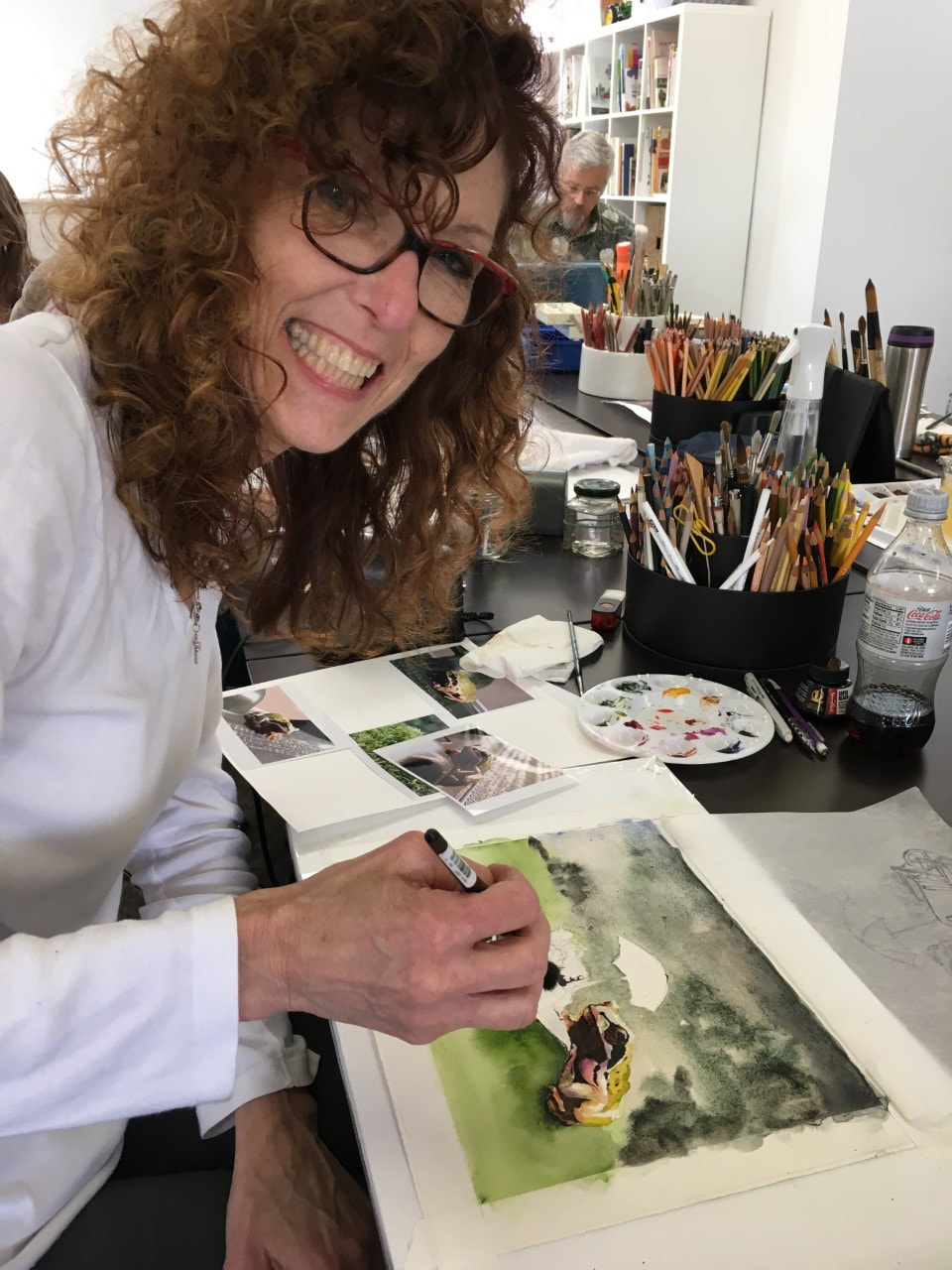
 RSS Feed
RSS Feed